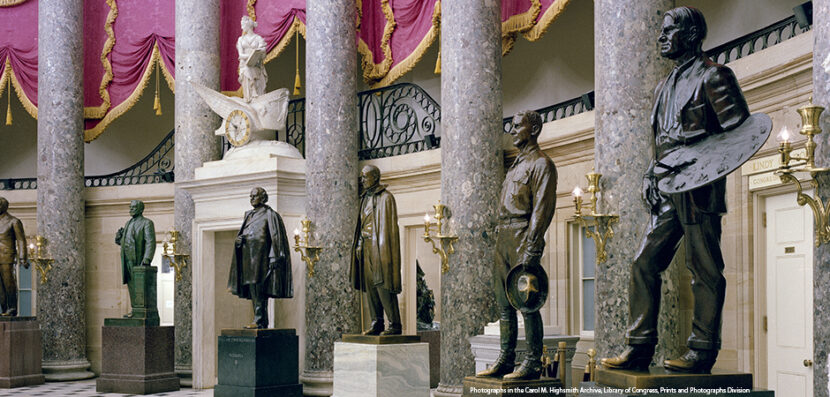- Current Events Nebraska Rejects Winner-Take-All Proposal
- Citizenship Voting Under Age 18
- Citizenship Citizenship in Action
- Democratic Party Biden’s and Trump’s Recent Primary Results
- Elections Trump and Biden Win South Carolina and Michigan Primaries
- Democratic Party Trump and Biden Win Big in Early February Contests

An Historic New Statue at the U.S. Capitol
Mary McLeod Bethune was an educator and civil rights activist. And now, she will be commemorated with an historic statue at the U.S. Capitol in Washington, D.C. But why Bethune? Why is this statue significant, and what will it look like? Here, Election Central takes a closer look at the important details.
Who Was Mary McLeod Bethune?
Bethune was born in 1875 in South Carolina to parents who were formerly enslaved. She was the only one of her seventeen brothers and sisters to attend school. She grew up believing in the power of education to advance greater racial equality. After graduating from North Carolina’s Scotia Seminary. Bethune then studied further at Dwight Moody’s Institute for Home and Foreign Missions. This Chicago-based school was training its students for religious mission work. But Bethune was unable to find a church willing to sponsor her. She returned home to the South and began teaching.
She taught for ten years, and in 1904, founded the Daytona Normal and Industrial Institute for Negro Girls in Florida. It was one of the few places where African American women could pursue a college degree. The school began with only five students and boxes and crates were used for desks. Her Florida school eventually became a college and in 1929 it merged with the all-male Cookman Institute. Bethune-Cookman College began issuing degrees in 1943. Today the private Bethune-Cookman University enrolls over 2,800 students and offers 45 different college degrees.
Along with her work in education, Bethune co-owned a resort in Daytona, Florida and also co-founded the Central Life Insurance Company in Tampa. This company grew to become the largest black-owned insurance company in the state of Florida.
Bethune also served as president of the National Association of Colored Women. Bethune also founded the National Council of Negro Women. Meanwhile, she continued her activism and advised several presidents, most notably Franklin D. Roosevelt. He made her a special advisor on minority affairs. Bethune died in 1955 in Daytona, Florida.
The Statue’s Importance
Statuary Hall is a special place in the U.S. Capitol building. It contains two statues from each of the fifty U.S. states. Bethune will now be the first African American to have a state-commissioned statue in Statuary Hall. It’s also significant because the Bethune statue, which is from Florida, will replace that of Confederate General Edmund Kirby Smith. The statue was sculpted out of the last piece of statuary marble from Renaissance artist Michelangelo’s quarry in Italy. Also, the artist of Bethune’s statue is Nilda Comas, who will now become the first Hispanic sculptor to create a statue for the National Statuary Hall State Collection.
The statue is not the first way that the nation has honored Bethune’s contributions. She was inducted into the National Women’s Hall of Fame in 1973. The U.S. Postal Service issued a stamp with her picture on it in 1985. You can also visit the Mary McLeod Bethune Council House National Historic Site in Washington, D.C.
What Will It Look Like?
Bethune’s statue is made of marble and is eleven feet tall, weighing in at more than six thousand pounds. It shows her wearing a cap and gown and a pearl necklace. She holds a black rose in one hand and a walking stick in the other. The rose symbolizes her commitment to education and her belief in interracial harmony. The stick is modeled after one she received as a gift from President Roosevelt. She stands in front of a stack of books whose spines include words from her last will and testament: love, faith, racial dignity, courage, and peace. On the base of the statue is her name, home state, birth and death dates, and one of her quotes: “Invest in the human soul Who knows, it may be a diamond in the rough.”
A bronze replica of the same statue will be placed in a riverfront park in Daytona Beach.


